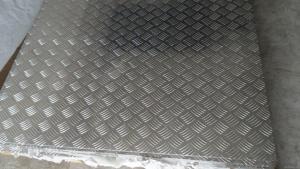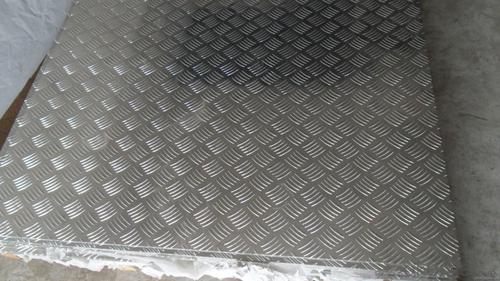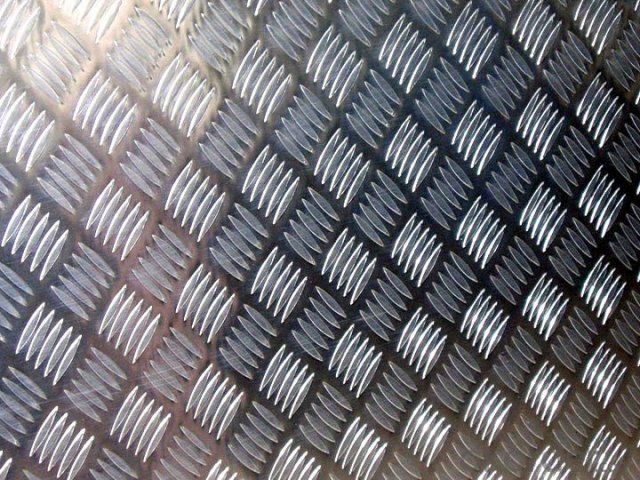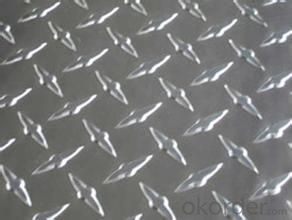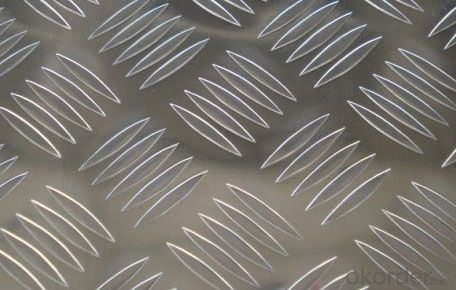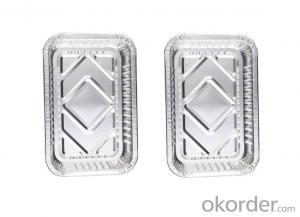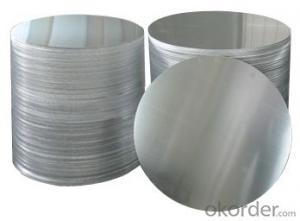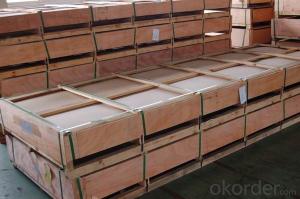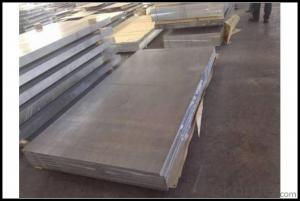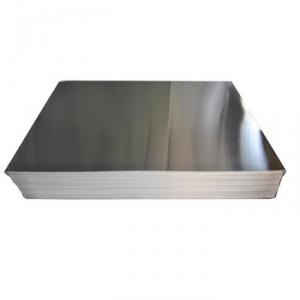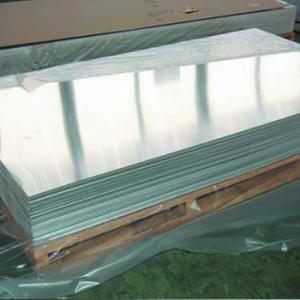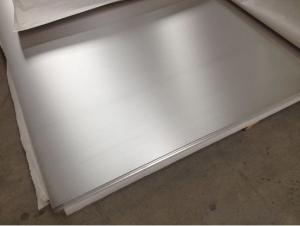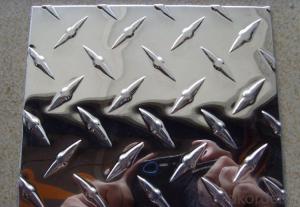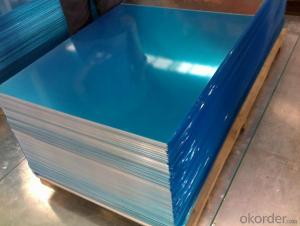Aviation Aluminum Sheets - Aircraft Quality Aluminum Tread Plate 7075
- Loading Port:
- Shanghai
- Payment Terms:
- TT OR LC
- Min Order Qty:
- 8 m.t.
- Supply Capability:
- 10000 m.t./month
OKorder Service Pledge
OKorder Financial Service
You Might Also Like
Specification
aluminum chequered plate are widely usd for bus, cars and shipping vessel as the floor....
Aluminum tread plate is also called anti-slide aluminum sheet which is widely used in manufacturing vehicles, ships, washing machines, refrigerator shell, etc.
Specification:
Alloy: 1050, 1060, 1100, 3003, 3105, 5052
Temper: O, H12, H14, H16, H18, H22, H24, H26, H32
Thickness: 1.0~10mm
Width: 1000~1600mm
Length: 1000~6000mm
Packing:
One roll in an individual box or printed PP bag
Certain quantities in a standard carton
Depends on customer’s request
Service
1. We have the good and professional team, have a good after-sales service.
2. Accept any drawings or your samples to develop new product.
3. Offer relateive technical support,quick response,all your inquire will replied within 24 hours.
4. OEM, buyer design, buyer label services provided.
5. Have the certification of ISO 9001, SGS.
6. Special discount and protection of sales area provided to our distributor.
FAQ
Q1:Do you provide sample? How many days will samples be finished?
Free samples will be provided if needed, but customers should undertake shipping cost or freight charges, samples will be finished in 5-7days
Q2: Can we visit your factory?
Welcome to our factory at any time.
Q3: Complaint solving process
Finding your salesman—Salesman provide you the solution (If it’s our responsibility, we will resend substitutes or return money or provide discount for your next order, etc.; If it’s shipping company’s responsibility, we will also help you until the problem is resolved.) —If salesman can’t solve your problem, please call our manager .
Q4: Delivery time
3~30working days after confirming the payment. If the order is urgent, we will push our workers to finish in advance.
Q5: What's your MOQ?
Normally 8MT are requested as the minium order quantity ,we shall give
additional instructions in special circumstances.
Q6: What are the terms of payment and currencies do you accept?
T/T or L/C is accepted, currently we appreciated your payment through
USD,EUR, RMB
Q7: Do you accept customized orders?
Yes, we do. Your customized orders are always welcomed. Please kindly offer us your samples or drawings, so that we can customize the products according to your preferences. About any further detail, please feel free to contact us.
Q8: What information should I let you know if I want to get a quotation?
Your detailed requirements regarding the products's dimensions, including shape, thickness, top out (length*width*height), and your order quantity are highly appreciated if you want further information about our quotation
Q9: How about the mass production?
The lead time of mass production depend on quantity, usually 25-30days (20FT) .
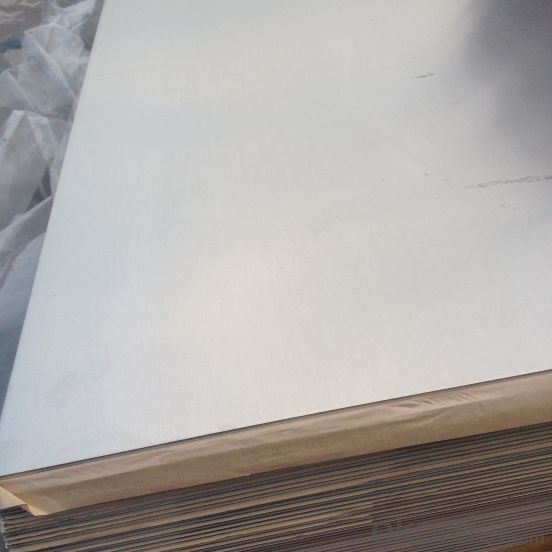
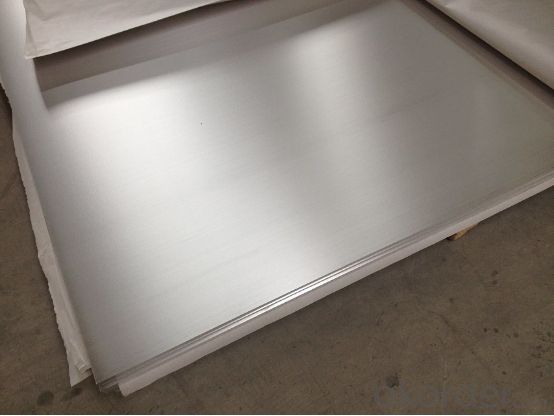
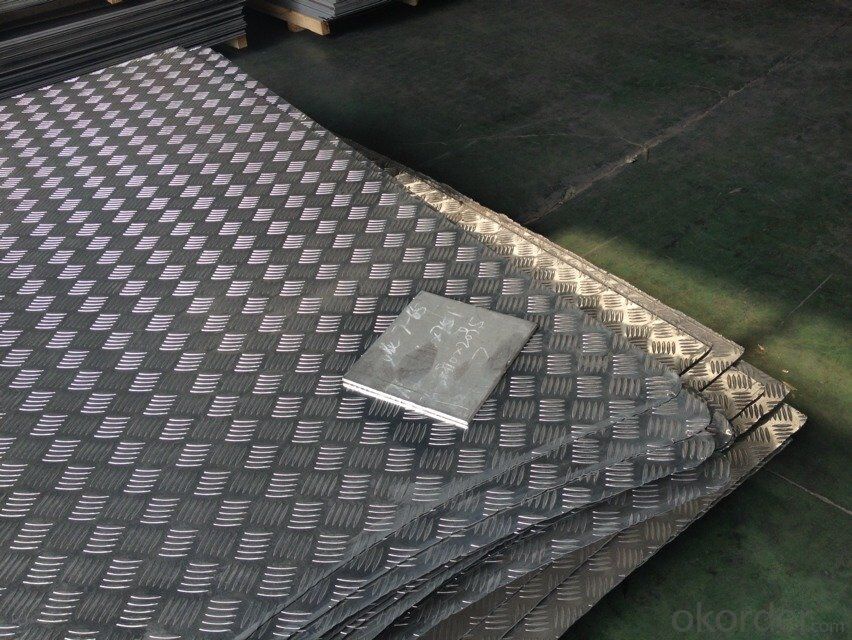
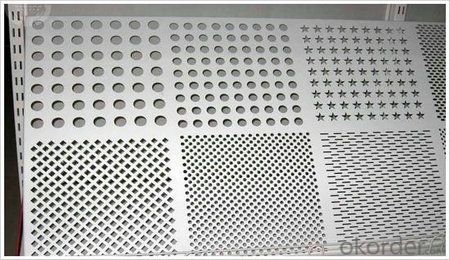
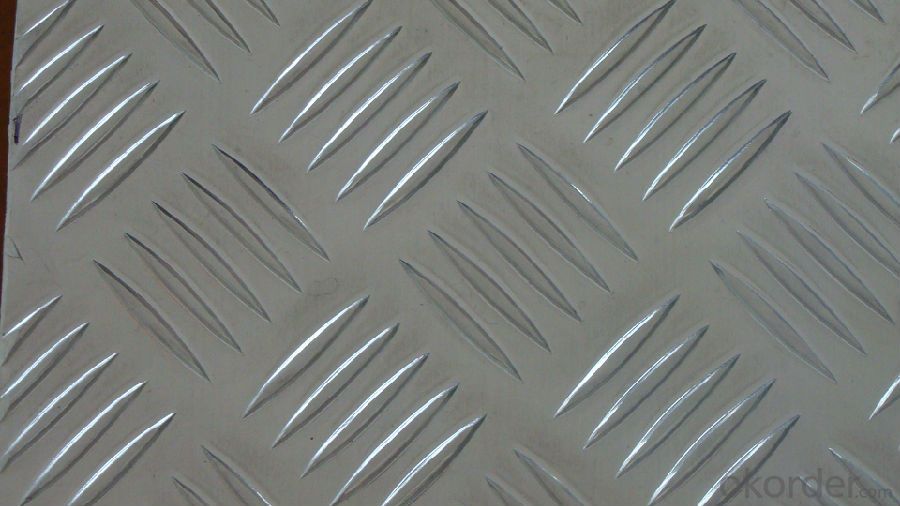
- Q: What is the bending radius for aluminum sheets?
- The bending radius of aluminum sheets may vary depending on the sheet's thickness and alloy. In general, thinner sheets (around 1-3 mm) should have a bending radius of approximately 1.5 times their thickness. On the other hand, thicker sheets (over 3 mm) can increase the bending radius to around 2.5 times their thickness. Nevertheless, it's important to bear in mind that these are general guidelines and the bending radius may need to be adjusted according to the specific application and desired outcome. To obtain accurate bending radius information, it is always recommended to seek advice from a professional or consult the manufacturer's technical data sheets.
- Q: Are aluminum sheets suitable for food processing equipment?
- Yes, aluminum sheets are suitable for food processing equipment. They are widely used in the food industry due to their excellent heat conductivity, corrosion resistance, and easy maintenance. Additionally, aluminum is non-toxic and does not react with food, making it a safe and hygienic choice for food processing equipment.
- Q: What are the different types of surface treatments available for architectural aluminum sheets?
- There are several types of surface treatments available for architectural aluminum sheets, including anodizing, powder coating, and PVDF coating. Anodizing involves creating a protective oxide layer on the surface of the aluminum, providing enhanced corrosion resistance and durability. Powder coating involves applying a dry powder to the surface of the aluminum and then curing it with heat, resulting in a durable and decorative finish. PVDF coating, also known as Kynar coating, is a type of liquid coating that provides excellent weather resistance and color retention. These surface treatments can enhance the appearance and performance of architectural aluminum sheets for various applications.
- Q: This question asks for methods to guarantee the safety and reliability of a project when using aluminum sheets.
- <p>To ensure your project's safety and reliability using aluminum sheets, follow these steps: 1. Choose high-quality aluminum sheets with the appropriate thickness and grade for your project's requirements. 2. Ensure proper design and engineering to withstand expected loads and stresses. 3. Use appropriate fasteners and joinery methods to secure the sheets, avoiding stress concentrations. 4. Implement corrosion protection measures such as coatings or anodizing, especially for outdoor applications. 5. Perform regular inspections and maintenance to check for signs of wear, corrosion, or damage. 6. Adhere to safety standards and regulations for aluminum construction. 7. Consult with professionals or engineers experienced in aluminum fabrication for guidance and validation.</p>
- Q: What is the cost of aluminum sheet compared to other metals?
- The cost of aluminum sheet compared to other metals can vary depending on various factors such as market conditions, availability, and specific metal grades. Generally, aluminum sheet is considered to be more affordable than many other metals such as stainless steel, copper, and brass. This is mainly due to the abundance of aluminum in the Earth's crust and the relatively low cost of extracting and refining it. Additionally, aluminum is often lighter in weight compared to other metals, making it a more cost-effective option for applications where weight is a concern, such as in the transportation industry. However, it is important to note that the cost of aluminum can fluctuate based on global supply and demand dynamics, tariffs, and other economic factors. Therefore, it is recommended to check current market prices and consult with suppliers or metal specialists for accurate and up-to-date pricing information.
- Q: Can aluminum sheets be used for heat dissipation?
- Indeed, heat dissipation can be achieved by employing aluminum sheets. Renowned for its outstanding thermal conductivity, aluminum effectively conducts heat away from its origin, rendering it highly sought-after in numerous industries for heat sinks and heat exchangers. By molding and shaping aluminum sheets into diverse arrangements, surface area can be maximized, thereby augmenting heat dissipation. Additionally, the lightweight and corrosion-resistant characteristics of aluminum render it a favored material for applications involving heat dissipation.
- Q: why can aluminum sheet after oxide film removal react quicker with hydrochloric acid?
- the reason is very simple, the original aluminum sheet has a layer of dense oxide film AI2O3, which has prevented the inner aluminum sheet from reacting with hydrochloric acid. but after oxide film removal, aluminum sheet will directly contact hydrochloric acid, generating H2.
- Q: I deal with aluminum plate material 2A12, thickness 14mm, crack, same temperature treatment, diameter 8mm aluminum bars, no cracks, original aluminum plate quenching crack, and aluminum plate, the material is closed
- There are no special cracks in the aluminum bars, such as 1 of the heat distortion, 3 of the metallurgical quality, 2 of the solid solution system, the reasonable analysis of the crack location and appearance
- Q: Are 101 aluminum sheets suitable for conductive heat transfer applications?
- No, 101 aluminum sheets are not suitable for conductive heat transfer applications as they do not have good thermal conductivity properties.
- Q: What specific conditions are necessary for the storage and transportation of aluminum sheets to ensure their quality and safety?
- <p>Yes, there are special requirements for storing and transporting aluminum sheets. Aluminum sheets should be stored in a dry, cool place to prevent moisture and temperature extremes which can cause warping or corrosion. They should be stacked flat and evenly to avoid bending or denting. When transporting, aluminum sheets should be secured to prevent shifting during transit, which can lead to damage. Protective coverings may be used to shield the sheets from dirt, scratches, or other potential hazards. It's also crucial to handle the sheets carefully to avoid bending or denting, which can occur if they are not properly supported during transport.</p>
Send your message to us
Aviation Aluminum Sheets - Aircraft Quality Aluminum Tread Plate 7075
- Loading Port:
- Shanghai
- Payment Terms:
- TT OR LC
- Min Order Qty:
- 8 m.t.
- Supply Capability:
- 10000 m.t./month
OKorder Service Pledge
OKorder Financial Service
Similar products
Hot products
Hot Searches
Related keywords
